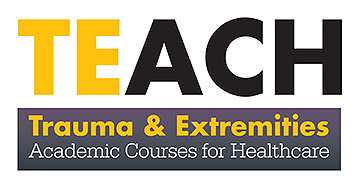
What is the ideal humeral stem length in shoulder arthroplasty?
Message from Dr. Joaquin Sanchez-Sotelo
Mayo Clinic | Rochester, MN

Historically, failure of the humeral component in shoulder arthroplasty has been relatively uncommon. However, traditional humeral components used for cemented or cementless fixation were relatively long.1,2 Standard length humeral components were perceived to be potentially problematic for the management of periprosthetic fractures, or when removal of well-fixed components was needed in revision surgery. As such, over the last decade there has been a trend towards use of shorter and shorter stems.
Interestingly, some adverse bone reactions have been noted and reported with certain ultra-short stems. These have included imperfect alignment, severe stress shielding, cortical bone resorption, spontaneous cortical defects, and a relatively high rate of loosening.3,4,5 Some surgeons perceive that the widespread adoption of very short stems have actually led to worse component performance. Have we gone too short?
In order to ensure alignment and achieve primary stability without an extremely high fit-fill ratio, shorter stems need to engage a minimum distance below the transition point between the conical and cylindrical portions of the proximal humerus endosteal canal. ReUnion S was designed utilizing Stryker’s Orthopedic Modeling and Analysis (SOMA), a computed tomography database and software that was used to determine the ideal stem length. By maintaining all other features of the ReUnion stem (1mm diameter increments, extended medial flare, narrow wedge-shape proximal body, and hydroxyapatite coating), the ReUnion S was designed to retain the alignment and stability qualities of the standard length stem.6
Reference
- Sanchez-Sotelo et al., Radiographic assessment of uncemented humeral components in total shoulder arthroplasty. J Arthroplasty Vol. 16; 2: 180 - 187
- Schoch et al., Optimizing follow-up after anatomic total shoulder arthroplasty. JSES 2017. Vol. 26; 6, 997-1002
- Casagrande et al., Radiographic evaluation of short-stem press-fit total shoulder arthroplasty: short-term follow-up. J Shoulder Elbow Surg (2016) 25, 1163–1169
- Raiss et al., Postoperative radiographic findings of an uncemented convertible short stem for anatomic and reverse shoulder arthroplasty. J Shoulder Elbow Surg. 2019 Apr;28(4):715-723
- Schnetzke et al., Mid-term results of anatomical total shoulder arthroplasty for primary osteoarthritis using a short-stemmed cementless humeral component. JBJS. 2018 May 1;100-B(5):603-609
- Campbell et al., Analysis of Humeral Morphology as it related to stem length. RU-WP-3
The information contained in this document is intended for healthcare professionals only.
A surgeon must always rely on his or her own professional clinical judgment when deciding whether to use a particular product when treating a particular patient. Stryker does not dispense medical advice and recommends that surgeons be trained in the use of any particular product before using it in surgery.
The information presented is intended to demonstrate the breadth of Stryker's product offerings. A surgeon must always refer to the package insert, product label and/or instructions for use before using any of Stryker's products. Products may not be available in all markets because product availability is subject to the regulatory and/or medical practices in individual markets. Please contact your sales representative if you have questions about the availability of products in your area.
RU-NL-1
